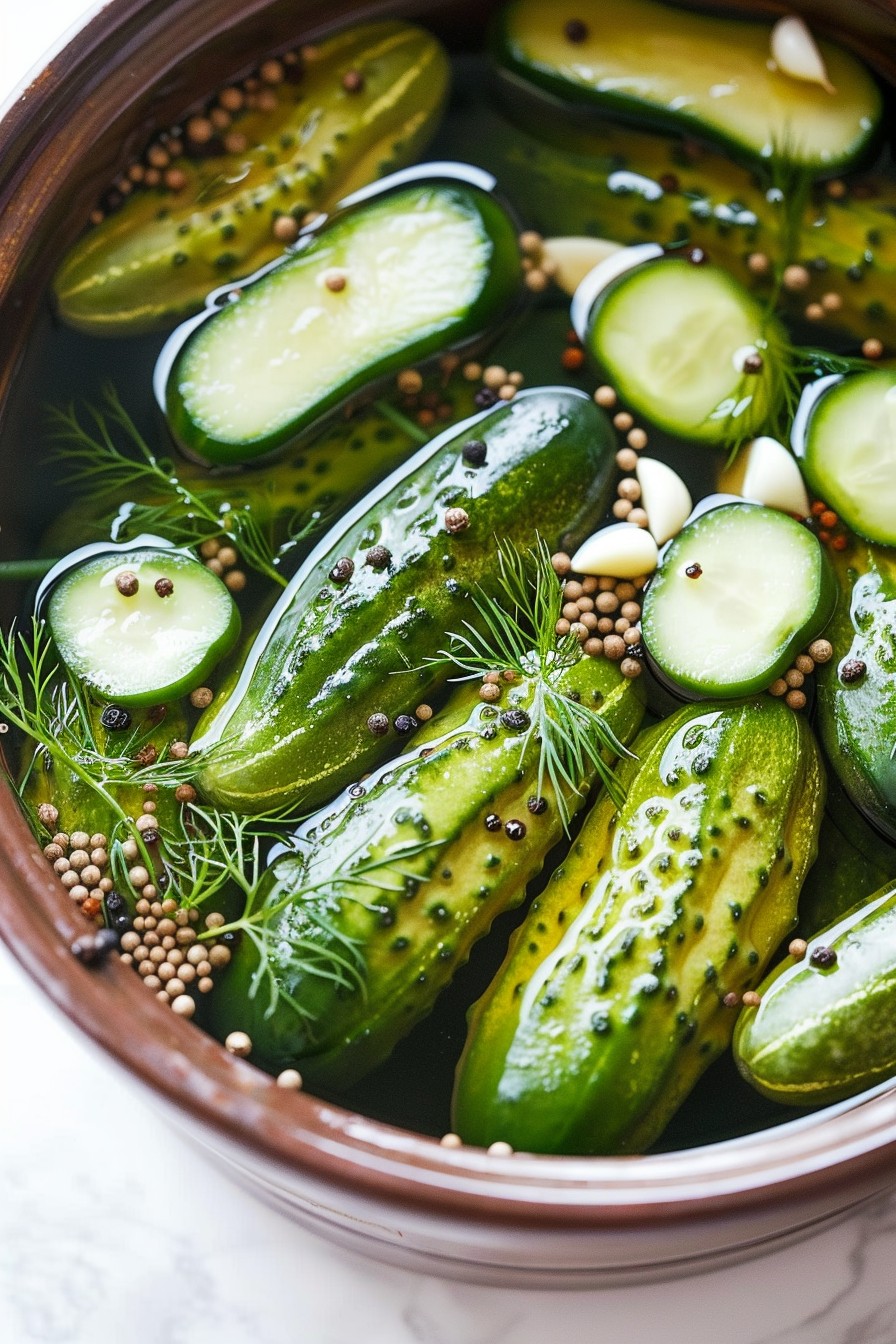Pickling is an art that transforms the humble cucumber into a crunchy, tangy delight. Perfect for snacking, sandwiches, or just because, this dill pickle recipe crock method is foolproof and delivers pickles with the perfect crunch and flavor balance.
Why This Recipe Works
- Slow Fermentation: Using a crock allows for slow fermentation, enhancing flavor and texture.
- Simple Ingredients: Only a handful of ingredients are needed, each playing a crucial role in the pickling process.
- Customizable Spice Level: Adjust the amount of garlic and dill to suit your taste preferences.
Ingredients
- 5 lbs small cucumbers, washed and ends trimmed
- 8 cups water
- 1/2 cup pickling salt
- 6 cloves garlic, peeled and smashed
- 1 bunch fresh dill, including stems
- 2 tbsp mustard seeds
- 1 tbsp black peppercorns
Equipment Needed
- Large crock or food-grade plastic bucket
- Plate that fits inside the crock
- Glass jar or weight to hold the plate down
- Clean cloth or towel
Instructions

Prepare the Brine
In a large pot, combine water and pickling salt. Bring to a boil, stirring until the salt is completely dissolved. Remove from heat and let cool to room temperature. This brine is the foundation of your pickles, so ensure the salt is fully dissolved for even fermentation.
Layer the Crock
Place half of the garlic, dill, mustard seeds, and peppercorns at the bottom of the crock. Add the cucumbers, then top with the remaining spices and dill. The layering ensures every bite is packed with flavor.
Add the Brine
Pour the cooled brine over the cucumbers until they are completely submerged. Place the plate on top of the cucumbers and weigh it down with the jar to keep everything under the brine. This prevents mold and ensures even pickling.
Ferment the Pickles
Cover the crock with a clean cloth and store in a cool, dark place for 3-7 days. Check daily for scum and remove if necessary. The fermentation time depends on your taste preference; shorter for milder pickles, longer for more tang.
Store Your Pickles
Once fermented to your liking, transfer the pickles and brine into clean jars and refrigerate. They’ll keep for several months, getting more flavorful over time.
Tips and Tricks
For crisper pickles, add a grape leaf to the crock; the tannins help maintain crunch. If you notice any mold, skim it off immediately—it’s normal but should be removed to prevent spoilage. For a more intense flavor, let the pickles ferment longer, tasting daily after the third day to monitor the flavor development.
Recipe Variations
- Spicy Dill Pickles: Add sliced jalapeños or red pepper flakes to the crock for a kick.
- Sweet and Sour Pickles: Include a cup of sugar in the brine for a sweeter version.
- Garlic Lovers’ Pickles: Double the garlic for an extra pungent punch.
Frequently Asked Questions
Can I use table salt instead of pickling salt?
It’s best to use pickling salt as it doesn’t contain additives that can cloud the brine or affect the taste. Table salt can be used in a pinch, but may result in less clear brine and slightly altered flavor.
How do I know if my pickles are fermenting correctly?
You should see small bubbles forming around the cucumbers, a sign of active fermentation. A sour, tangy smell is normal, but any off odors or colors indicate spoilage.
Can I reuse the brine?
Yes, you can reuse the brine for another batch, but be sure to add fresh spices and dill for full flavor. The brine will be less potent with each use, so it’s best for only one or two additional batches.
Summary
This dill pickle recipe crock method is a simple, rewarding way to make crunchy, flavorful pickles at home. With minimal equipment and ingredients, you can enjoy homemade pickles that far surpass store-bought versions in taste and texture.
